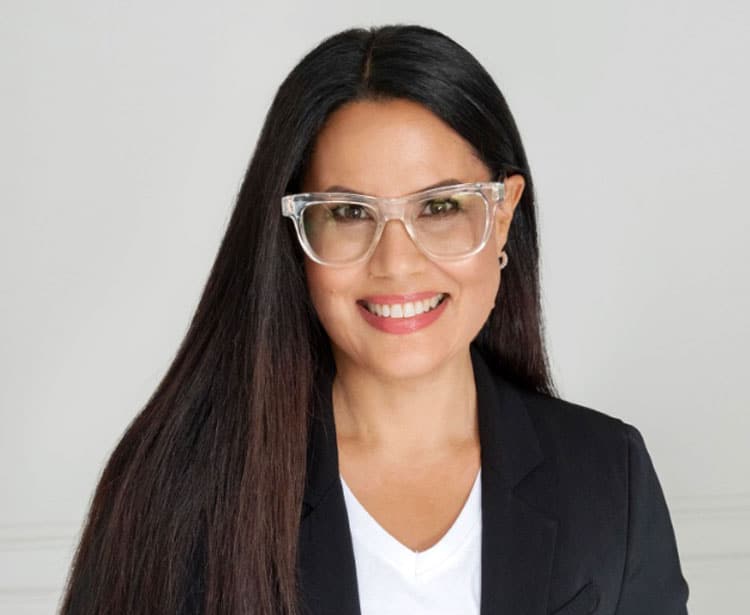The Number One Question Leaders Are Not Asking That Will Change the Game When They Do

Leaders are making decisions every second of every day. Some are strategic, some are tactical, some are thoughtful, and many are unconscious. Yet, every choice we make impacts our results. What that impact is begins with the question that most people are not asking themselves or others:
Who’s sitting at the head of the table?
In this world that moves a million miles a minute, where we have instant access to each other, and where back-to-back meetings without bio, meal, or thinking breaks are the norm, we’re not taking the time to be mindful of what part of us is actually making decisions. We’re unconsciously hijacked by qualities like “Overwhelm,” “Stress,” “Shame,” or “Anxiety” which are presiding over our conversations, meetings, relationships, presentations, and our daily life in general. This is wreaking havoc in ways we may not even know.
The truth is that who we are being fuels our actions, which creates our results, not the other way around. For example, if you’re experiencing “Resistance,” consciously or unconsciously, that will elicit a different, and perhaps incongruent, return than if say, “Trust,” is sitting at the head of your table and running the show. If you’re not getting the outcome you want that’s aligned with your true vision and values, then it’s time to change the seating arrangement and choose with purpose who’s a better fit to sit at the head of your table.
This is true wherever people gather from boardrooms to zoom rooms to dining rooms, and more. If folks are not conscious of who they’re being or what they’re thinking as they’re rushing from one room to another, there’s a good chance “Stress,” “Worry,” “Perfectionism,” “Imposter,” “Exhaustion,” “Anxiety,” or “Unworthy” will be in charge. This collective that’s situated around these larger tables becomes the decision-makers for the company, family, community, or relationship. Whoever is sitting at the head of each of our respective tables affects the whole.

So, how does one realistically implement this exercise? By putting it into practice, you’ll see that negative thought patterns and outdated dynamics, even if they’re unconscious, can be interrupted. That’s when you can make a different choice, including relegating the person who’s not in service to your bigger mission to a different seat at the table. Here’s how:
- Identify who’s sitting around your table.
Imagine holding a meeting in a conference room, but instead of your colleagues, stakeholders, and shareholders seated around the table, picture all the people attending as various aspects of you. Who is there? “Confidence,” “Doubt,” “Love,” “Fear,” “Joy,” and “Judgmental,” may be a few of the parts of you sitting around the table. Make a list of all your many components. - Observe without judgment who’s sitting at the head of your table.
Throughout the day, set an alarm on your phone labeled, “Who’s sitting at the head of the table?” to go off every 2-4 hours and when it does, observe without judgment who’s in charge. This is an invitation to get curious and notice, not criticize. Be aware of what quality is in control and any thoughts, feelings, and behaviors that are present. When you view yourself and your actions from this neutral vantage point, you can attune to who’s sitting at the head of your table and influencing you in the moment. - Choose who’s sitting at the head of the table.
Once you name who’s sitting at the head of the table, that provides the space to change it. Choose to call in a part of you who will be aligned with your goals and energize you to meet them. Which part is sitting at the head of the table will dictate everything. - Lead with and set intentions.
At the start of each day, set an overall intention about who will sit at the head of your table. Then, carve out a few minutes before meetings, before writing and sending emails, and before having conversations with colleagues, board members, stakeholders, clients, etc. so you can choose to connect with this part of yourself. This will help you consciously create the results you desire. - Use this question to help others align with their highest and best.
At the start of each meeting, consider asking each person in attendance to identify “Who’s sitting at the head of their table?” This helps people get grounded and also transform any limiting thoughts that may have been counter to the goals at hand. Allowing people the space to choose who they’re being, provides the opportunity to be more clear, aligned, and powerful in their decision-making process. - Choose to respond vs. react.
We’re each contributing all the time to what’s circulating in our world and the world. This is why it’s so important to define and be purposeful about our choices. When we take personal responsibility, which is the ability to respond vs. react, that is when we can choose to bring more intention to the choices we make, which gives us more power over the results we create.
When we each make the mindful choice of who’s sitting at the head of our table, we have the power to amplify positivity. If we operate on autopilot and don’t make our choices thoughtfully, we’re dispersing energy that may be antithetical or even damaging to our objectives.
Like the butterfly effect, which says that something as small as the flutter of a butterfly’s wing can ultimately cause a typhoon halfway around the planet, our choices create a consequential ripple in our companies, teams, health, wealth, and relationships. What kind of ripple is up to us.
The choice is yours.
Written by Stef Ziev.
Have you read?
Largest Hotel Chains in the World, 2023.
Best Residence by Investment Programs for 2023.
International Financial Centers Ranking, 2023.
Best Citizenship by Investment (CBI) for 2023.
The World’s Most Valuable Unicorns, 2023.
Ready to join the CEOWORLD magazine Executive Council– Find out if you are eligible to apply.
Bring the best of the CEOWORLD magazine's global journalism to audiences in the United States and around the world. - Add CEOWORLD magazine to your Google News feed.
Follow CEOWORLD magazine headlines on: Google News, LinkedIn, Twitter, and Facebook.
Copyright 2025 The CEOWORLD magazine. All rights reserved. This material (and any extract from it) must not be copied, redistributed or placed on any website, without CEOWORLD magazine' prior written consent. For media queries, please contact: info@ceoworld.biz








